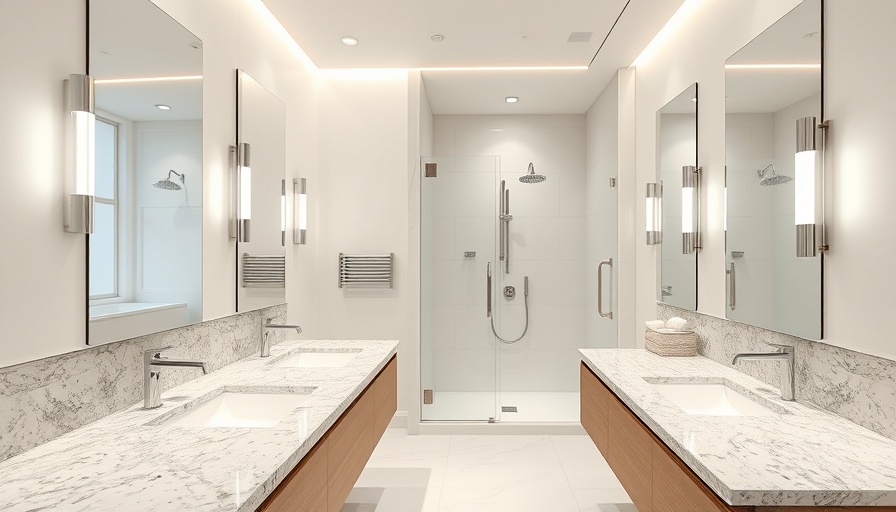
Designing for Life Changes: A New Approach to Remodeling
As we move through various stages of life, the spaces we inhabit need to reflect those shifts. The concept of aging in place transcends mere accommodation for retirement; it embraces versatility throughout family growth and evolution. Today’s homeowners are not just looking for stylish aesthetics; they desire functionality that adapts to their changing needs. Whether you're a new parent, a busy professional, or supporting aging relatives, you need a home that aligns with your lifestyle while preparing for the future.
Durable, Low-Maintenance Finishes: Essential Choices
Remodeling for longevity requires a keen focus on the materials chosen for your home. High-traffic areas demand robust finishes that resist the wear-and-tear of daily life. For flooring, options like luxury vinyl plank and porcelain tile stand out due to their water and scratch resistance. These materials are perfect for kitchens and bathrooms, where spills and messes are common. Furthermore, in living spaces, hardwood with superior finishes such as aluminum oxide provides elegance and resilience.
Countertops also play an essential role in creating a sustainable environment. Quartz countertops, for instance, are non-porous and eliminate the need for sealing, allowing you to focus on family time rather than maintenance. Additionally, solid surface materials like Corian are not only aesthetically pleasing but can also be effortlessly repaired, ensuring longevity without compromising on design.
Smart Layouts: Flexibility is Key
An adaptable layout optimally utilizes space and meets the evolving needs of its inhabitants. An open floor plan is increasingly favored for its ability to facilitate mobility and facilitate interaction among family members. It's also wise to consider barrier-free environments in kitchens and bathrooms, which can ease navigation as one ages or if mobility issues arise.
Integrating Safety Features
Safety should seamlessly blend into your home design without detracting from its aesthetic appeal. Simple modifications like installing grab bars in bathrooms or using lever-style door handles can make a significant difference. Furthermore, non-slip flooring options can drastically reduce the risk of falls. These features should be incorporated subtly, ensuring that your space remains stylish and comfortable while prioritizing safety.
Future-Proofing Your Home: The Long Game
While it might be tempting to plan only for the present, today's remodel needs to be future-ready. Think about how your home will serve you over the next decade or more. This forward-thinking approach can be as straightforward as allocating space for future accessibility features or planning layout changes that can enhance mobility easements later on.
Additionally, integrating technology can enhance your home’s efficiency and safety. Smart home devices can offer real-time monitoring of safety features, such as smoke detectors or security systems. These enhancements not only provide added security but also streamline management of your home environment, giving you peace of mind.
Conclusion: Embrace Helpful Remodeling Strategies
As you embark on the journey of remodeling for aging in place, keep in mind that every choice you make today contributes to the safety and enjoyment of your home tomorrow. By focusing on durable finishes, flexible layouts, and seamless safety features, you can ensure your home not only meets the needs of today but gracefully adapts to future family changes.
Ready to start your remodeling project? Engage with professionals who specialize in aging-in-place designs for insights and tips that will help you create a home that evolves with your family.
 Add Row
Add Row  Add
Add 



Write A Comment